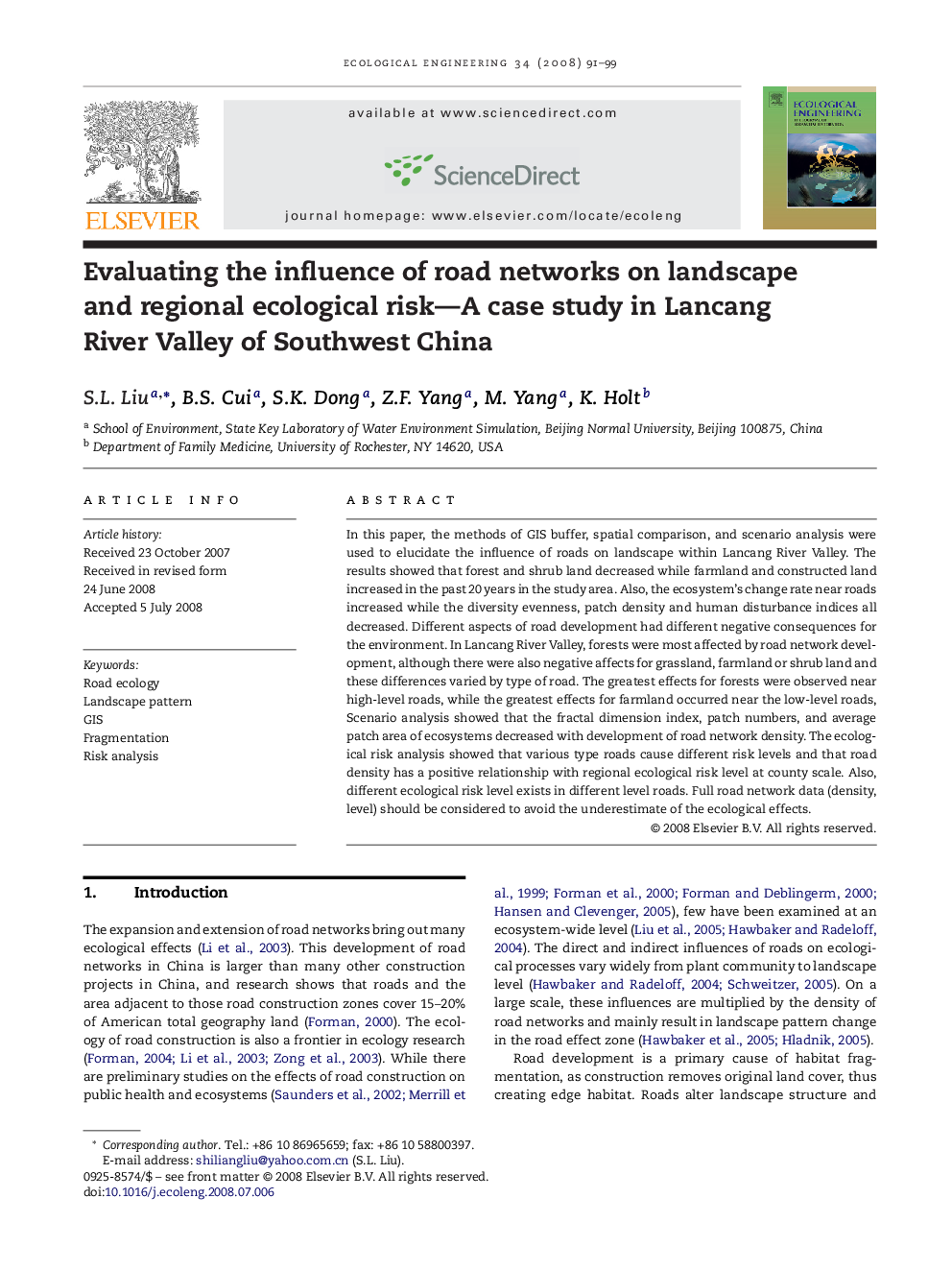| Article ID | Journal | Published Year | Pages | File Type |
|---|---|---|---|---|
| 4390605 | Ecological Engineering | 2008 | 9 Pages |
In this paper, the methods of GIS buffer, spatial comparison, and scenario analysis were used to elucidate the influence of roads on landscape within Lancang River Valley. The results showed that forest and shrub land decreased while farmland and constructed land increased in the past 20 years in the study area. Also, the ecosystem's change rate near roads increased while the diversity evenness, patch density and human disturbance indices all decreased. Different aspects of road development had different negative consequences for the environment. In Lancang River Valley, forests were most affected by road network development, although there were also negative affects for grassland, farmland or shrub land and these differences varied by type of road. The greatest effects for forests were observed near high-level roads, while the greatest effects for farmland occurred near the low-level roads, Scenario analysis showed that the fractal dimension index, patch numbers, and average patch area of ecosystems decreased with development of road network density. The ecological risk analysis showed that various type roads cause different risk levels and that road density has a positive relationship with regional ecological risk level at county scale. Also, different ecological risk level exists in different level roads. Full road network data (density, level) should be considered to avoid the underestimate of the ecological effects.
